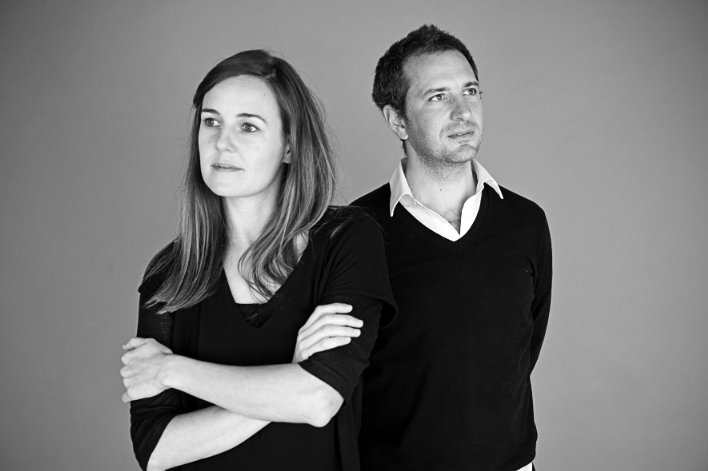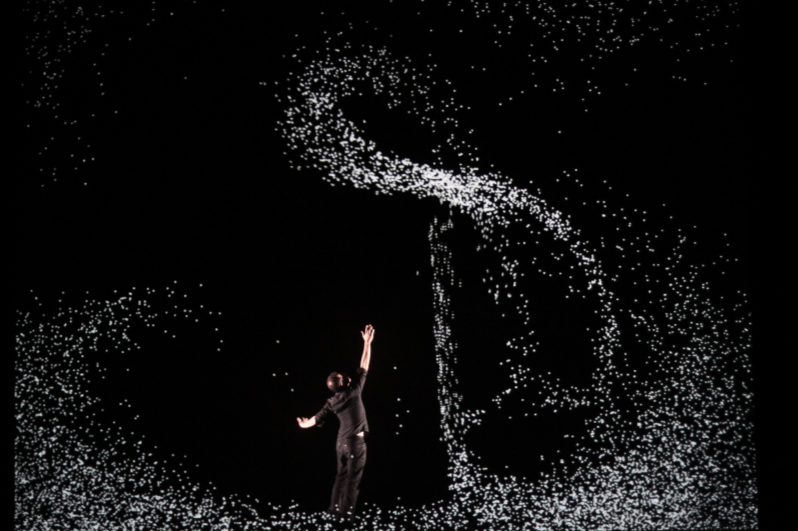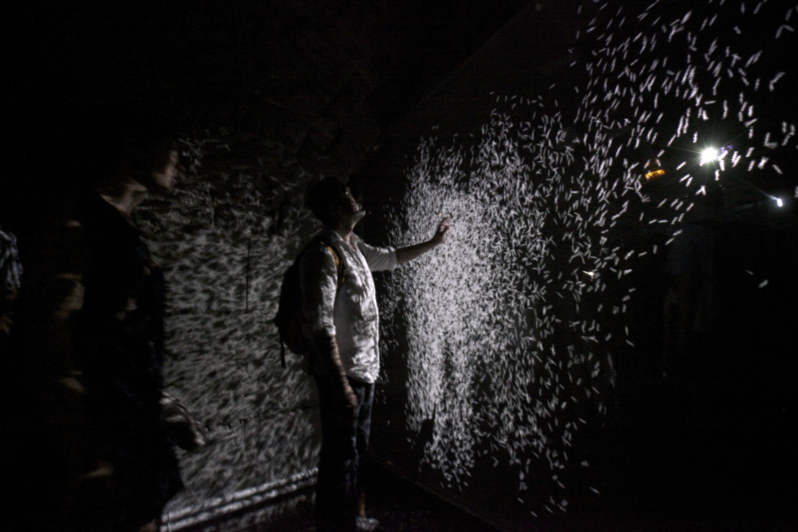ADRIEN M / CLAIRE B
PEOPLEText: Aya Shomura
Do you know The Adrien M / Claire B Company, which has been acting in the fields of the digital arts and performing arts? Their shows are completely different from projection mapping only projected to walls of buildings, we can feel the possibility of digital is very spread. In fact, they create many forms of art, from stage performances to exhibitions combining real and virtual worlds with IT tools that were developed and customized specifically for them. They place the human body at the heart of technological and artistic challenges and adapt today’s technological tools to create a timeless poetry through a visual language based on playing and enjoyment, which breeds imagination. Let’s see the beautiful visual language world.

Adrien M / Claire B, © Romain Etienne
Please introduce yourself.
Hello we are “Adrien M / Claire B,” a French company working in the field of digital arts since 2004.
Claire: Adrien Mondot, is a multidisciplinary artist, computer specialist and juggler. His works explores and questions motion, at the crossing between art of juggling and computing innovation. He founded the company Adrien M in 2004. We joined forces in 2011, and we restructured the company together, that became “Adrien M / Claire B.”
Adrien: Claire Bardainne is a visual artist, graphic designer and stage designer. She is Graduate of the Ecole Estienne and the ENSAD in Paris. Her researches focus on the link between visual sign and space, and explore the comings and goings between what is real or imaginary.

“Un point c’est tout”, performance-conference, 2011, © Adrien M / Claire B

“XYZT, Les paysages abstraits”, Nuee Mouvantes, exhibition, 2011, © Laurence Fragnol
Why did you start working in two of you? In addition, why did you select the digital and Performing Arts as expression?
Claire: We met in 2010 during a “Labo,” a research project led by Adrien with the aim to make different artists meet and work together. As the days went by it became obvious that we had to create something together because we had the same goal: building strong bridges between the digital and real resources to allow the turning of the virtual into an extension of the real. We believe the digital can be a medium to build new imaginary worlds and offer new dramaturgy possibilities.
Read more ...





